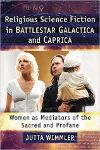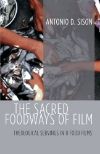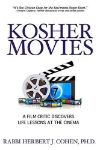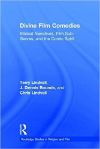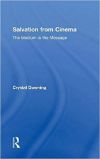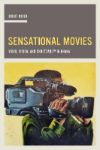- Author(s): Guerric DeBona
- When: 2019-09
- Where: Scorsese and Religion (Studies in Religion and the Arts, Volume: 15)
Anyone even vaguely familiar with Martin Scorsese and his films would not find the cover of the January-February 2017 issue of Fiim Comment at all unusual. With an enormous wooden cross towering in the background, Kerry Brown photographs the silver-haired director on the not of Silence (Darn), with right arm gesturing up, even as he gazes prophetically heavenward. The photograph represents an icon suitable for our greatest living American filmmaker, who has arguably made his enigmatic spiritual journey the centerpiece of his work. In an extensive series of interviews over the years, Scorsese has thoughtfully reflected on his now familiar autobiographical account of a young Catholic Italian-American's discernment between priesthood and filmmaker growing up on the streets of Little Italy in New York. In so doing he has opened up a window into a wider discussion of spirituality, Christian anthropology, and even ecclesiology.
In discussing the director's Catholic ecclesiologyI intend to move beyond the rather conventional and naive subjective categories towards what Paul Giles calls the intertextual politics of cultural Catholicism.' In Gloria view, personal ideas concerning the meaning of ethnic or religious identity tend 'to refer conceptual questions inward, to the upbringing of the writer or subsequent issues of personal belief, rather than outward to the more complex business of how such variations become disseminated and inflected within the larger, amorphous structure of culture and society." In other word, I want to affirm and acknowledge an objective horizon present in Scorsese films in order to examine his ecclesiology, or how to understand the 'the interstices of the text" since "it is not an interiorized but an externalized phenomenon, a series of signs that can be interpreted by the observer only in relation to other kinds of worldly events." Scorsese's films remain artifacts of a society and a Church in transition. How that transition evolved and under what circumstances remains largely speculative; I am proposing that Scorsese absorbed a somewhat reactionary, progressive post-Vatican ecclesiology, which was one of several emerging at the time, something like the way that Avery Dulles suggested that there were at least five dominant models of the Church in accessible 1974. Scorsese has been perhaps the foremost representative agent of his generation of Catholics corning of age in the 1960's and 1970's, narrating his cinematic texts inside a system of discursive tons operating within a complex web of collaboration among culture, autobiography and social force, including theologies of church.

